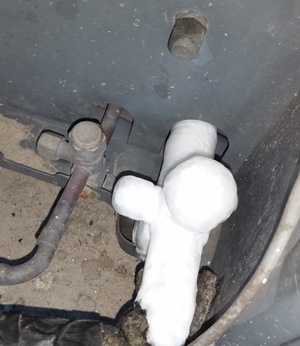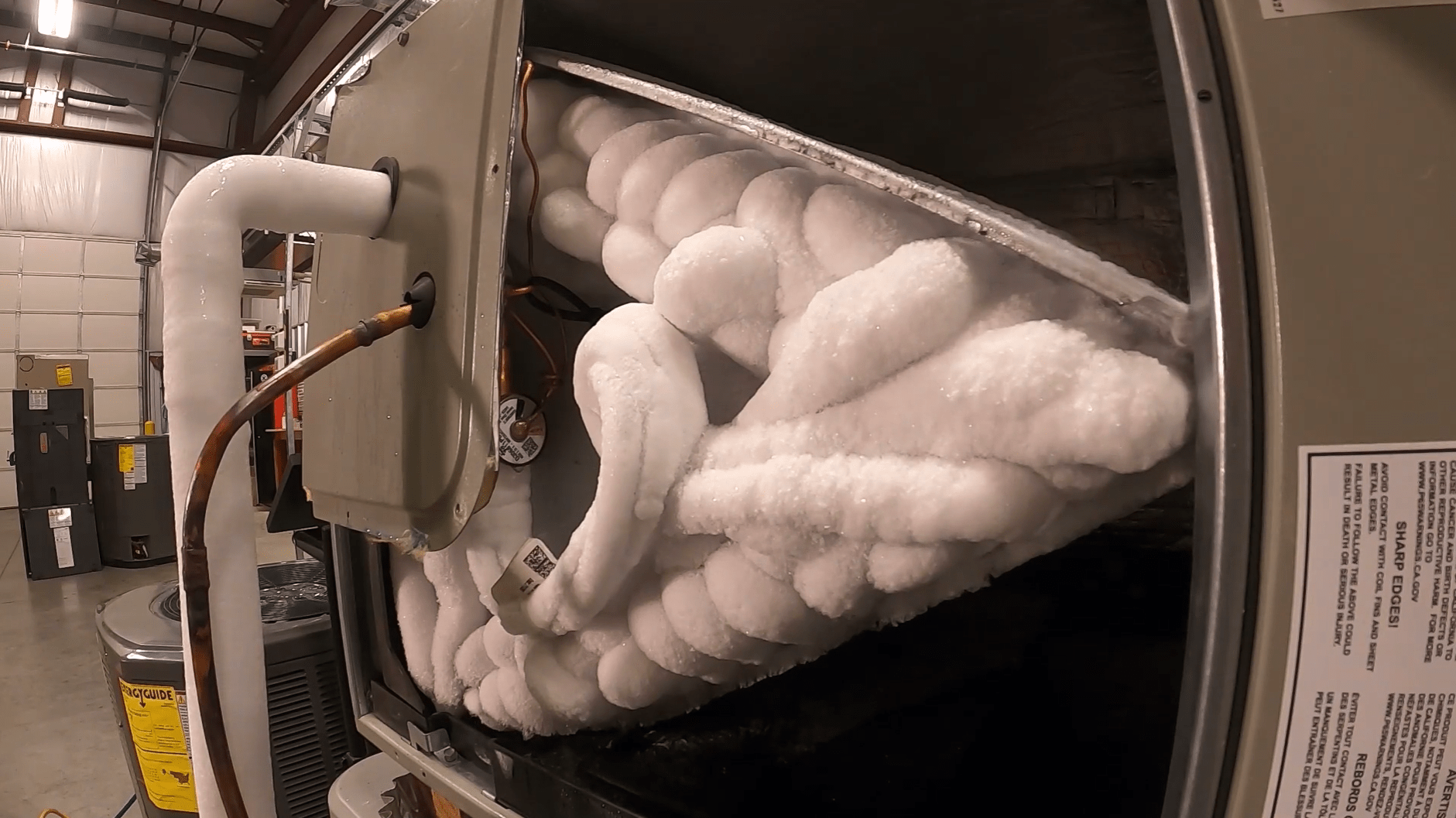Identifying a Frozen AC Pipe - Effective Solutions for House Air Conditioning Systems
Identifying a Frozen AC Pipe - Effective Solutions for House Air Conditioning Systems
Blog Article
How do you actually feel on the subject of What Do I Do If My AC Pipe Is Frozen?

Introduction
Discovering that your AC pipe is frozen can be worrying, especially during warm summer months when you count on your a/c the most. Recognizing what to do in such a scenario is critical to stop more damage to your air conditioning system and ensure your convenience indoors.
Comprehending the Causes
Numerous aspects can contribute to the cold of an a/c pipeline. Recognizing these reasons can assist you deal with the issue effectively.
Lack of Airflow
One common root cause of a frozen a/c pipe is inadequate airflow. When the air movement over the evaporator coil is restricted, it can trigger the coil to drop below freezing temperature level, bring about ice formation on the pipeline.
Low Refrigerant Levels
Insufficient refrigerant degrees in your air conditioning system can likewise cause an icy pipe. Reduced refrigerant levels can trigger the pressure in the system to go down, bring about the cold of wetness on the evaporator coil.
Cold Weather Conditions
In cooler environments, freezing temperature levels outside can add to the cold of air conditioner pipes. If your AC system is not properly protected or if there are leaks in the ductwork, chilly air can penetrate the system, triggering the pipe to ice up.
Dirty Air Filters
Filthy or clogged air filters can restrict air movement in your AC system, resulting in numerous issues, consisting of a frozen pipe. It's important to change or clean your air filters frequently to make certain proper airflow and avoid ice build-up.
Indicators of a Frozen Air Conditioning Pipe
Acknowledging the indicators of an icy air conditioner pipeline is important for timely activity.
Lowered Airflow
If you discover a significant decrease in air movement from your vents, it can indicate an icy pipeline.
Ice Buildup on the Pipe
Visible ice accumulation on the cooling agent line or the evaporator coil is a clear sign of an icy air conditioning pipe.
Unusual Sounds from the Unit
Uncommon audios, such as hissing or gurgling, originating from your air conditioning unit can signal that there's ice present on the pipe.
Immediate Actions to Take
When faced with a frozen air conditioning pipeline, it's essential to act quickly to prevent more damages to your air conditioning system.
Shutting off the AC
The initial step is to switch off your air conditioner to avoid the system from running and aggravating the concern.
Looking for Blockages
Evaluate the area around the interior device for any kind of obstructions that may be blocking air movement, such as furnishings or curtains.
Defrosting the Pipe
You can utilize gentle techniques like placing towels soaked in warm water around the frozen pipe to assist thaw it gradually.
Safety nets
Taking preventive measures can aid prevent future occurrences of an icy AC pipe.
Routine Maintenance Checks
Schedule normal upkeep contact an expert HVAC specialist to ensure that your a/c system is running successfully.
Transforming Air Filters
On a regular basis change or cleanse your air filters to prevent airflow constraints and keep optimum performance.
Protecting Exposed Pipes
If your air conditioning pipes are subjected to cold temperatures, think about shielding them to avoid freezing during winter season.
Seeking Professional Help
If DIY methods fall short to deal with the concern or if you're unsure about how to continue, it's ideal to look for support from a qualified HVAC professional.
When DIY Methods Fail
If your efforts to thaw the pipe or address various other problems are unsuccessful, it's time to call a specialist.
Relevance of Hiring a Professional HVAC Technician
A licensed HVAC technician has the expertise and devices required to identify and repair issues with your AC system safely and properly.
Conclusion
Managing a frozen air conditioner pipeline can be an aggravating experience, however knowing just how to respond can aid lessen damages and restore convenience to your home. By understanding the causes, identifying the indications, and taking punctual action, you can successfully address the problem and avoid future events.
Frozen AC Line: Why It Happens & What To Do About It
A frozen AC line can be a rather peculiar sight in a place like Phoenix, Arizona where nothing ever freezes. In this post, we’ll discuss what makes an air conditioner line frozen – and what you can do about it.
Dirty Air Filters
Did you know that you should be cleaning or replacing your air filters on a monthly basis? Failing to do this can result in airflow issues that, in turn, cause your evaporator coils and lines to freeze over. You’ll notice a buildup of ice on both components, although the buildup on your pipes will, of course, be more evident unless you open your air condition up to reveal the coils.
What To Do About It
Give your air filter a good cleaning if it’s reusable. If not, replace the filter outright. Next, switch your air conditioner’s fan setting on and leave it there for 2-3 hours. This will draw warm air in, helping to thaw your evaporator coil. You can also check out this article for some tips on cleaning the coils themselves if you’d like to speed the process up. Before you switch the unit back to its normal state, make sure the supply vents are completely unobstructed and free of dust or other debris.
If you keep having this issue even after replacing your filters regularly, contact a local HVAC repair company and have them inspect your evaporator coil, ductwork, and any other components that may be at fault. If you live in the Phoenix, Arizona area, give American Home Water and Air a call.
Low Refrigerant Levels/Leakage
What To Do About It
Contrary to what air conditioner “recharge” companies often tell their clients about refrigerant, it should never need to be simply refilled. You see, refrigerant runs in what experts refer to as a “closed loop.” Refrigerant really shouldn’t be leaving that loop. If it is, you’ve got a leak.
Paying someone to come and pump more refrigerant into your system (aka “recharge” it) isn’t the solution. Doing that will simply kick the can down the road. Besides, refrigerant leaks can be harmful to the environment and people in your home.
Rather, you need to take care of the leak with the help of a technician. Check out this article for some more information about dealing with air conditioners that are leaking refrigerant. Before you contact a technician, switch your thermostat to the off position. Then, switch the fan setting on and let it run for 2-3 hours so the unit can thaw.
Improper Temperature Setting
Improper temperature settings can also cause a drop in your air conditioner’s pressure. What many people don’t realize is that air conditioners are actually designed to run when temperatures have fallen above roughly 60 degrees Fahrenheit. If you run the unit when it’s cold outside, you’ll run into many issues, including frozen components.

We had been made aware of that article on How can I fix an air conditioner’s frozen pipe? through a good friend on a different web property. Kindly take the opportunity to promote this page if you liked it. Kudos for your time. Come back soon.
Find Out More Report this page